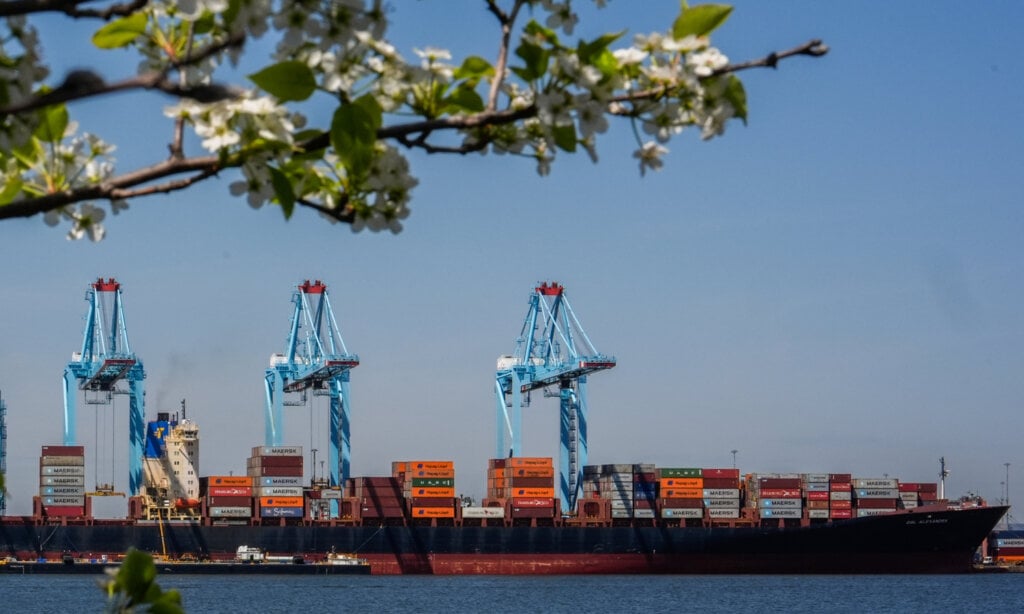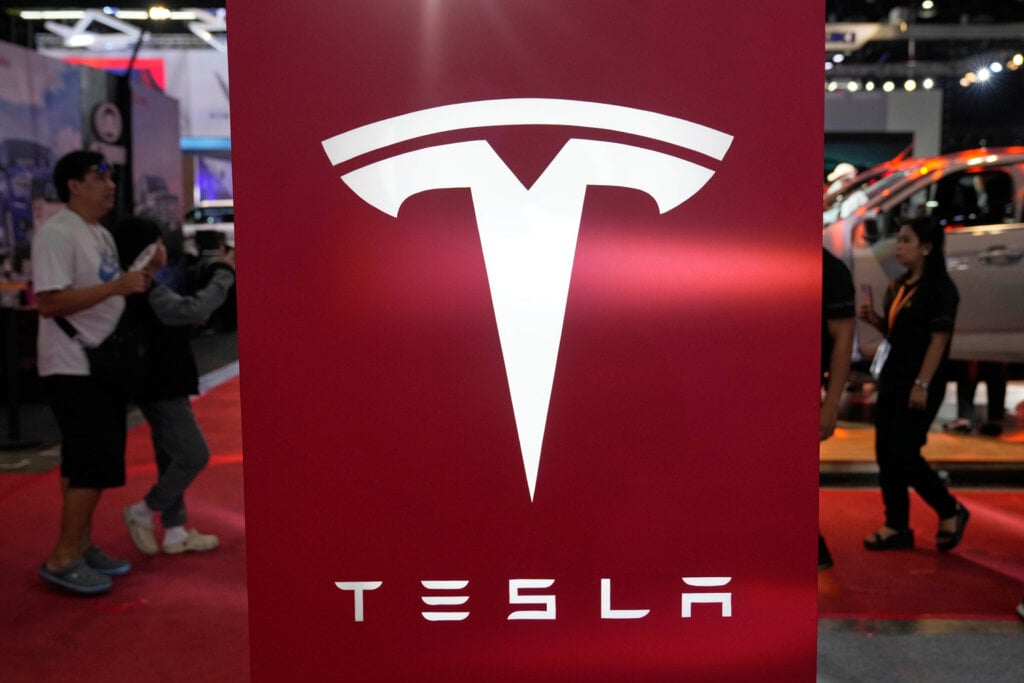How companies are dealing with tariffs
How Tesla and other companies are dealing with the uncertainty of the trade war.
Advertisement
How Tesla and other companies are dealing with the uncertainty of the trade war.

Companies from a wide range of industries are having trouble assessing the impact of tariffs because of the constant uncertainty over whether and where the taxes will be imposed next or postponed, sometimes on a daily or weekly basis. Some tariffs remain in place against key U.S. trading partners, but others have been postponed to give nations time to negotiate.
As a result companies have been giving somewhat shaky financial forecasts during their latest round of earnings updates. Here’s how several big companies are dealing with the tariff confusion:

The Irving, Texas, company makes Huggies, Kleenex and other personal care and household staples. It expects tariffs to add $300 million of costs and has warned about flat earnings for the year.
“The current environment will now mean greater costs across our global supply chain versus our expectations at the beginning of the year,” said CEO Michael Hsu, in a statement Tuesday following the company’s latest earnings results.
Roughly 20% of Kimberly-Clark’s U.S. costs are exposed to tariffs. The bulk of its estimated $300 million cost impact is being driven by U.S. tariffs against China. The company is working to shift some of its supply chain to mitigate the costs.
William Brown, CEO of 3M Co., the maker of adhesives, coatings, Scotch Tape and Post-it notes, acknowledged that “tariffs are going to be a headwind this year.”
The company stuck to a full-year forecast for profit of $7.60 to $7.90 per share, excluding the impact of tariffs. But 3M did include a slide in its presentation for analysts with a “tariff impact sensitivity,” that it said could lower earnings by 20 cents to 40 cents per share, after factoring in measures that will somewhat reduce the hit from tariffs. Those steps could include cost cuts and “selective price increases where feasible.”
Brown also said during a conference call that the company is looking at alternative production sites with different countries of origin to try and minimize the tariff impact.
Most of the RTX’s industrial base and supply chain is located inside the U.S., but tariffs are still poised to hurt the defense company behind missile and radar systems.
RTX expects up to $800 million in cost impacts from tariffs imposed on Canada, Mexico, China and other nations. It hasn’t included the potential impact in its earnings forecast.
“Generally speaking, the aerospace and defense sector has operated in a duty-free environment,” said President Christopher Calio, in a conference call with analysts. “And that has been instrumental to the industry maintaining one of the largest trade surpluses across American manufacturing industries for decades.”
The maker of jet engines and aviation systems is also accustomed to low trade barriers within the aviation sector. The company now expects tariff costs of roughly $500 million after hopefully mitigating some of the impact through programs and strategies, such as expanding foreign trade zones.
“We’ll continue to advocate for an approach that reestablishes zero-for-zero tariffs in the aviation sector and ensures a level playing field for the U.S. aerospace industry,” said CEO H. Lawrence Culp Jr., in a conference call with analysts. “In the meantime, heightened tariffs will result in additional costs for us and our supply chain.”
The furniture company could see much more damage from a mix of tariffs and a downturn in consumer spending.
Flexsteel has moved out of China, but Vietnam supports about 55% of its revenue, while operations in Mexico support almost 40% of sales, the company said.
If the 46% reciprocal tariff rate on Vietnam, which is currently delayed, goes into effect, “it will have wide-reaching implications both on Flexsteel’s business and the overall U.S. furniture industry,” said President and CEO Derek Schmidt, in a conference call with analysts.
Those wide-ranging impacts could include a weaker U.S. economy brought on by stunted consumer spending. The company expects sales between $109 million and $116 million during its current quarter, but that could change depending on shifts in tariffs and consumer demand.

Uncertainty over tariffs and an unpredictable trade war is weighing heavily on companies as they report their latest financial results and try to give investors financial forecasts. Some tariffs remain in place against key U.S. trading partners, but others have been postponed to give nations time to negotiate. The tariff and trade picture has been shifting for months, sometimes changing drastically on a daily basis. Those shifts make it difficult for companies and investors to make a reliable assessment of any impact to costs and sales.
On Tuesday, Treasury Secretary Scott Bessent said he expects a “de-escalation” in the trade war between the U.S. and China, but cautioned that talks between the two sides had yet to formally start. Here’s how several big companies are dealing with the tariff confusion:
Tesla is in a better position than most car companies to deal with tariffs because it makes most of its U.S. cars domestically. But it still sources materials from other nations and will face import taxes.
The bigger impact will be seen in the company’s energy business. The company said the impact will be “outsized” because it sources LFP battery cells from China.
The broader trade war could also hurt the company as China, the world’s largest electric vehicle market, retaliates against the U.S. Tesla was forced earlier this month to stop taking orders from mainland customers for two models, its Model S and Model X. It makes the Model Y and Model 3 for the Chinese market at its factory in Shanghai.
CEO Elon Musk, a member of Trump’s administration, on Tuesday reiterated that he believes “lower tariffs are generally a good idea for prosperity.” But he added that ultimately the president decides on what tariffs to impose.
The Amsterdam-based maker of paints and coatings for industrial and commercial use said the big risk from tariffs could come in the form of lower demand for its products. The company said almost all sales of finished goods in the U.S. were locally produced, with the majority of raw materials locally sourced.
“Over the years, we deliberately localized both our procurement and production in the U.S.,” said CEO Gregoire Poux-Guillaume, in a conference call with analysts. “We also largely run China for China and use the rest of Asia instead as an export base.”
The company’s products range from paints and coatings for the automotive industry to the do-it-yourself homeowner. Broader tariffs could squeeze consumers and businesses and hurt sales.
The medical device maker said it expects most of the effecs of tariffs to hit the company during the second half of the year, but that it can absorb the impact. The company raised its earnings and revenue forecasts for the year, despite the tariffs. It estimates a $200 million impact from tariffs in 2025, but said it can offset that through higher sales and reductions in discretionary spending.
The company said it has a long-standing supply chain around the globe and has made significant investments in the U.S.
Share this article Share on Facebook Share on Twitter Share on Linkedin Share on Reddit Share on Email